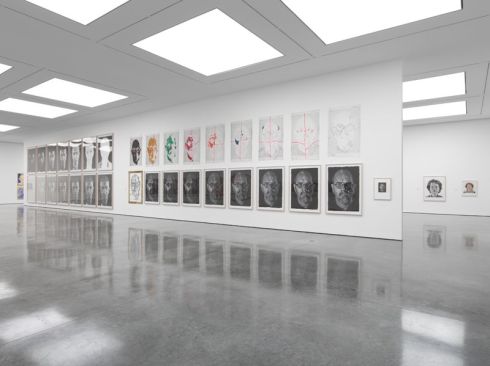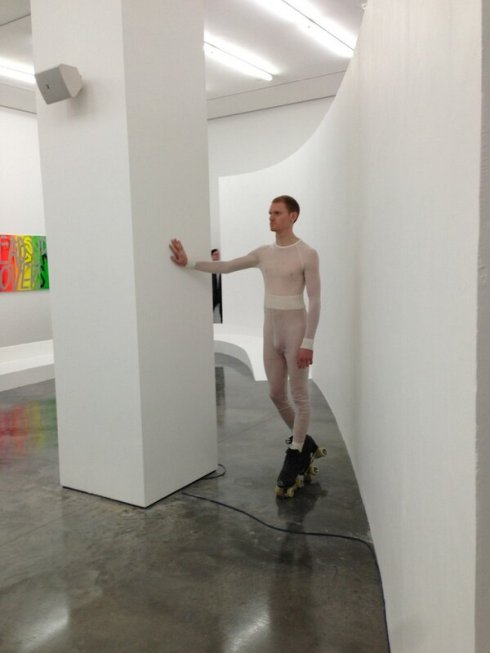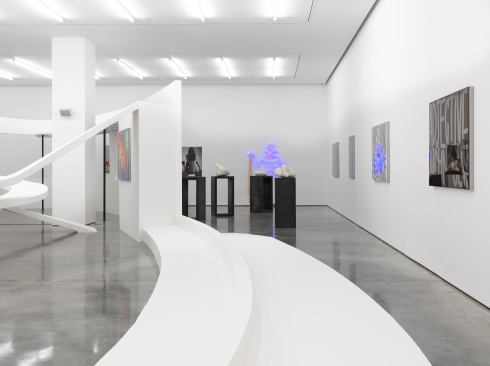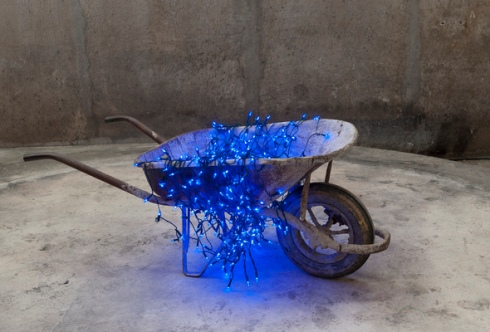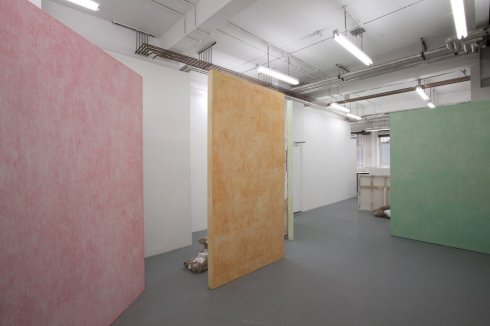As I’ve said before, I haven’t been able to write nearly as regularly as I would have liked. 2013 has flown by with excitement, hustle and bustle and some truly fabulous exhibitions. Again, there has been more grey paint on gallery walls than I care to remember but the point of this post is to celebrate some of the remarkable things I have seen. I have missed a lot too, particularly in the last couple of months, but it is testament to the incredible art programme across the UK that it is impossible to see everything.
Here we go with my highlights of 2013…
Towering at Tate – Schwitters in Britain
Cast your mind back to February when Tate Britain brought us an exhibition showing off Schwitters’ incredible multi-disciplinary practice that expressed his determination to make art using whatever was to hand. Tate successfully showed how Schwitters’ figurative works moved into abstraction and vice versa. Schwitters never gave up and his drive and enthusiasm, as well as his interaction with British art and culture, was excellently applauded by Tate.
Kurt Schwitters, Picture of Spatial Growths/Picture with Two Small Dogs, 1920 and 1939. Own photograph.
Number One at the National Gallery – Facing the Modern
There is no doubt that, in parts, Facing the Modern was a confusing show and it has been suggested that curatorially it was in the wrong order. But, notwithstanding these comments, it is one of the best shows I have seen this year. Using portraiture, the exhibition tells the story of Vienna’s middle classes – works are commemorative, critical, cautious, radical and chart the changing fortunes and times of the incredibly diverse city. This is a subtle exhibition that requires thought and tenderness whilst viewing. It may not include the most famous and familiar works by Klimt or Schiele but that is what makes it so special and the fact some of these works have been loaned is a triumph. The National Gallery are continuing to go from strength to strength with their exhibition programme and Michael Landy’s Saints Alive is also worthy of mention.
Walking around Facing the Modern. Image via www.theupcoming.co.uk.
Captivating Courtauld – The Young Dürer: Drawing the Figure
The Courtauld are rightly renowned for the quality and strength of their exhibitions and The Young Dürer was another golden gem from this small gallery. The exhibition concentrates on the artist’s journeyman years from 1490-96 when he travelled widely and was exposed to a range of new influences. Here, The Courtauld follow Dürer’s path to greatness as he learnt the intimacy and delicacy for which he came to be famous.
Detail of Albrecht Dürer, A Wise Virgin, 1493. Image via www.courtauld.ac.uk.
Blazing Barbican – The Bride and the Bachelors
The title of alone was going to be enough to pull in the punters but The Bride and the Bachelors was the first ever exhibition to explore Marcel Duchamp’s impact on John Cage, Merce Cunningham, Robert Rauschenberg and Jasper Johns. This was a challenging exhibition that blurred the boundaries between stage and gallery in a style that I think would have delighted Duchamp. Due to the exhibition’s design, the conversations between these creative genii were still very much ongoing. Duchamp governed the creativity of the period as well as our enjoyment of the show.
Duchamp stars at the Barbican. Own photograph
Leaving London – From Death to Death and Other Small Tales, Modern One (Scottish National Gallery of Modern Art), Edinburgh
As any regular reader will know, I spend at least one month of the year in Edinburgh and this summer I was able to see the sublime From Death to Death and Other Small Tales. The exhibition sought to create a conversation between works from the gallery’s own collection and pieces from the collection of Dimitris Daskalopoulos that focus on the human body. Some works referenced the body explicitly while others made subtle gestures to bodies that may or may not be present. It was so extensive it took over the entire building with around 130 works of top quality – an exhibition that really worked without compromise.
Ernesto Neto, It Happens When the Body’s Anatomy of Time, 2000. Own photograph.
Also with podium finishes were:
Glittering Gold – Leon Kossoff’s London Landscapes, Annely Juda
London Landscapes focused on Kossoff’s life in London looking at the congestion, the dirt and the real life of London. Kossoff made us fall in love all over again with the vigour and vibrance of the city.
Leon Kossoff, Dalston Lane No. 1, 1974. Image via www.onestoparts.com.
Shimmering Silver – Death: A self-portrait, The Wellcome Collection
Death: A self-portrait is an exhibition that showcased the collection of Richard Harris with approximately 300 objects from his strange and unique collection devoted to death. It was incredibly diverse – there were paintings, drawings, artefacts, sculptures, photographs, anatomical illustrations and much more. This was a giant cabinet of curiosities!
June Leaf, No stomach for death: Gentleman on Green Table, 1999-2000. Image via www.standard.co.uk.
Bright Bronze – Caitlin Art Prize 2013, Londonewcastle Project Space
The Catlin Art Prize is a highlight of the calendar and the brilliant eye of the curator means that we can normally expect great things from the nine chosen graduates who have had to produce new work for the exhibition. This year was no exception and the Londonewcastle Project Space was transformed with the latest ‘ones to watch’.
Terry Ryu Kim, Screening Solution I,II and III. Image courtesy of Peter Hope and via www.artcatlin.com.
Last but by no means least – Runner Up – Jodie Carey: Untitled (Slabs), Edel Assanti
Every exhibition at Edel Assanti is so very different but powerful in its own way. Although very simple in conception, the striking display of Jodie Carey’s works stayed with me. Seven plaster slabs were arranged within the gallery, connecting and conversing with one another despite their differing formats. The works had a real inescapable presence in the gallery – fragile yet monumental, they rose with impressive dominance.
Jodie Carey, Untitled (Slabs), 2012. Image via www.edelassanti.com.
There have been so many more shows, some that I have written about and some that I haven’t. There are a lot of fabulous exhibitions planned for next year, including some that I am working on, and I shall totter from one to another in skyscraper heels or by taxi if it’s too chilly.
As many of you enjoy the shoe signatures here my favourite three shoes pictures of 2013 plus a new one with which to wish you all A Merry Christmas and a Happy Shoe Year. Thank you, as ever, for reading Artista.








































































































